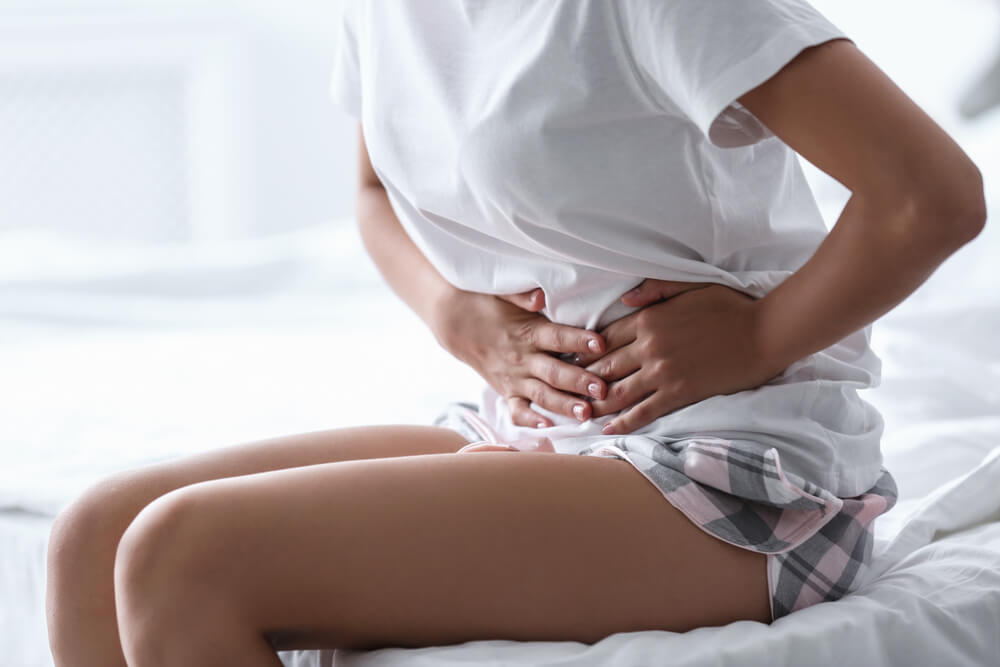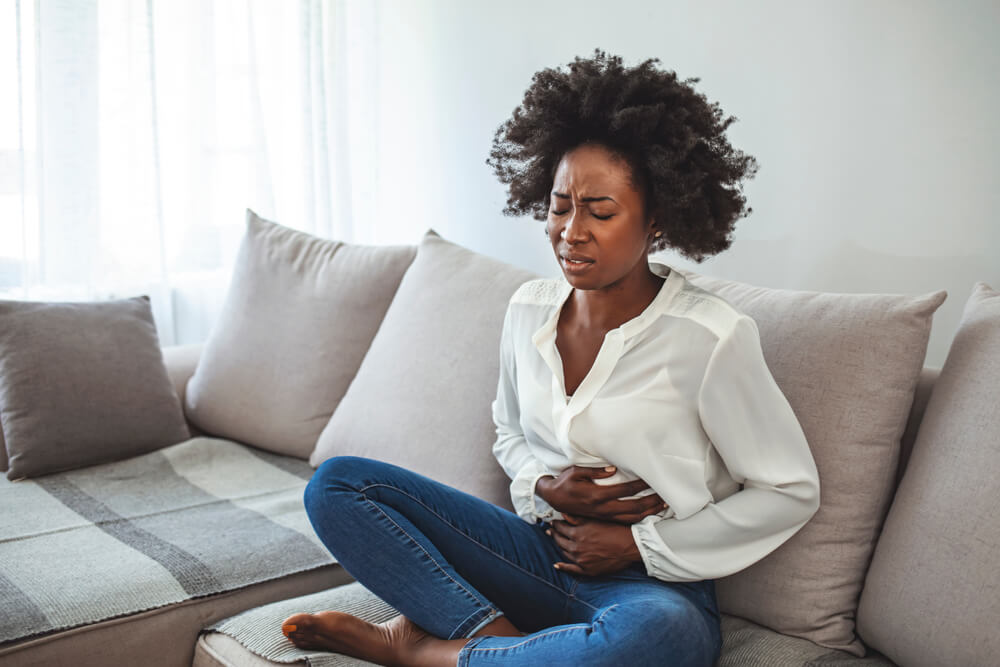Certain conditions in women are challenging for diagnoses, such as vaginismus, polycystic ovary syndrome, and most of all, endometriosis. In this article, you’ll learn about diagnosing endometriosis, its uncommon symptoms, and more. Of course, it is never a good idea to self-diagnose and self-treat, no matter which female condition you suspect you have. Instead, consult a professional for the best endometriosis treatment. Only then will you receive expert guidance and the best solution to get your health back on track.
That being said, how is endometriosis diagnosed? Why is it challenging to diagnose? So, without further ado, find out how to test for endometriosis properly, and much, much more.
Let’s begin.
What is Endometriosis?
When an unusual tissue similar to the tissue that lines the inside of the uterus (the endometrium) grows outside the uterus, a patient has endometriosis. It commonly causes pain and discomfort.
Typically, endometriosis involves the patient’s ovaries, but the tissue lining the pelvis and the fallopian tubes can also be involved. In some rare cases, this tissue can develop beyond the location of the pelvic organs.
With this medical condition, the tissue does not only resemble the endometrial tissue in appearance but also in behavior. Namely, it can thicken, break down, and bleed every time a woman menstruates. However, this unusual tissue cannot “escape” the woman’s body, so it remains trapped. Endometriomas (cysts) might form when this condition involves a woman’s ovaries. In addition, the surrounding tissue may easily become irritated, resulting in adhesions and scar tissue. Often, this causes risks for the woman, as the organs and the pelvic tissues may adhere to each other.
In many cases, endometriosis causes serious pain, particularly during menstruation. Moreover, a woman can develop issues with fertility. If you or a loved one are concerned about endometriosis, consult a professional with years of expertise like Dr. Konstantin Nikitin.
Common and Uncommon Symptoms of Endometriosis

Infertility and painful periods are some of the most common signs of endometriosis. However, there are some uncommon symptoms that make diagnosing endometriosis challenging. Below, find out the common and uncommon symptoms of this serious medical condition.
Common symptoms of endometriosis:
- Chronic pelvic pain, usually before or during the menstrual cycle
- Pain during sexual intercourse
- Extremely heavy menstruations that worsen with time
- Cramping during urination or bowel movements
- Infertility
- Various gastrointestinal issues such as constipation, nausea, and diarrhea
Uncommon symptoms of endometriosis:
- Difficulty breathing
- Chest pain
Helpful reminder: The amount of pain you may experience might not be related to the illnesses degree of severity. Some women with endometriosis may experience severe pain, while others don’t. Moreover, symptoms may also vary.
The biggest issue with diagnosing endometriosis lies in the versatility of the symptoms. As you can see, some of the uncommon symptoms of endometriosis may also hint to hiatal hernia (in the case of chest pain). So, it’s imperative to consult a healthcare specialist for the most accurate diagnosis.
Moreover, some women don’t experience any symptoms, boosting the chances of undiagnosed endometriosis. In the case of undiagnosed endometriosis, if left untreated, a woman may become infertile. Also, her chances of developing certain cancers will increase. To avoid undiagnosed endometriosis, we recommend visiting your OB-GYN at least once or twice a year for regular checkups.
How is Endometriosis Diagnosed?
Getting a proper diagnosis for this medical condition may take a while, mainly because patients confuse the symptoms with signs of other conditions. That’s why you must share as much information as possible with your healthcare specialist. So, how to test for endometriosis? The number one way is by laparoscopy. Laparoscopy is a popular surgical procedure that involves a camera called a “laparoscope” inserted into your pelvis through a small incision near your navel. The skilled surgeon will use the camera to look at the pelvic organs and check for any signs of illness. Upon diagnosing endometriosis, the doctor may give you treatment right away or remove it for more examination.
But, how to test for endometriosis if you don’t want incisions? Alternatively, you can opt for blood tests and scans, but these are typically ineffective ways of diagnosing endometriosis. Remember, endometriosis often shares signs and symptoms with other illnesses, so the diagnosis is challenging and usually delayed. Based on research, diagnosing endometriosis can last an average of 7.5 years (between a woman’s first doctor’s appointment and the one where she receives an accurate diagnosis).
Overall, the answer to “how is endometriosis diagnosed” is simple. You’ll need to schedule an appointment at a reliable clinic and choose laparoscopy.
Will Endometriosis Affect My Fertility?
As we’ve mentioned, women with undiagnosed endometriosis who leave the condition untreated have a high chance of infertility. With that in mind, in many cases, endometriosis will not make you unable to have children. Instead, it can make the process of becoming pregnant challenging.
Women with milder cases of this condition who do not seek treatment can become pregnant at a rate of up to 4.5% each month. In comparison, the fertility rate of healthy women is around up to 20%.
Women who want to boost their chance of pregnancy or women who want to alleviate pain should opt for laparoscopic surgery. Based on the results of a study, 29% of women with this condition who underwent laparoscopy could become pregnant within only 9 months.
Possible Medical Treatments for Endometriosis
If you’ve just been diagnosed with endometriosis and you’re trying to explore your treatment options, we have some good news. There are plenty of things you can do to prevent the recurrence of endometriosis.
Some options include:
- Progestin
- Oral contraceptive pill
- Gonadotrophin-releasing hormone agonists
- Danizol
Usually, a healthcare specialist will recommend the oral contraceptive pill as your initial treatment. The pill will address the pain by suppressing your period and stopping mild to moderate cases of the condition from progressing. Women who aren’t planning to have children in the near future may like this treatment approach.
However, in some cases, drug treatments won’t be effective. Fortunately, you can also look at surgical options for endometriosis treatment. Doctors often perform surgery to restore damaged organ function, remove adhesions and scarring, and get rid of the pain. On the downside, even though the surgeon can remove endometriosis, the underlying cause remains unchanged and has a high chance of recurring.
How Can I Reduce the Risk of Endometriosis?

Sadly, there is no way to prevent endometriosis. However, you can significantly reduce your risk of developing this medical condition by lowering estrogen levels in the body. Estrogen, an essential hormone in the body, assists in thickening the lining of the uterus during a menstrual period.
Here are some ways to reduce estrogen levels in the body:
- Exercise frequently and keep your body fat percentage low
- Reduce or eliminate alcohol
- Reduce or eliminate caffeine, including green tea, sodas, and coffee
- Consult your doctor about birth control with lower estrogen levels
Warning: Do not attempt to lower your estrogen levels without talking to your doctor first.
Book an Appointment Today
Stressed? Worried? You don’t know who to turn to? Consult us today and receive the best expert guidance, diagnosis, and treatment for your health concerns.


